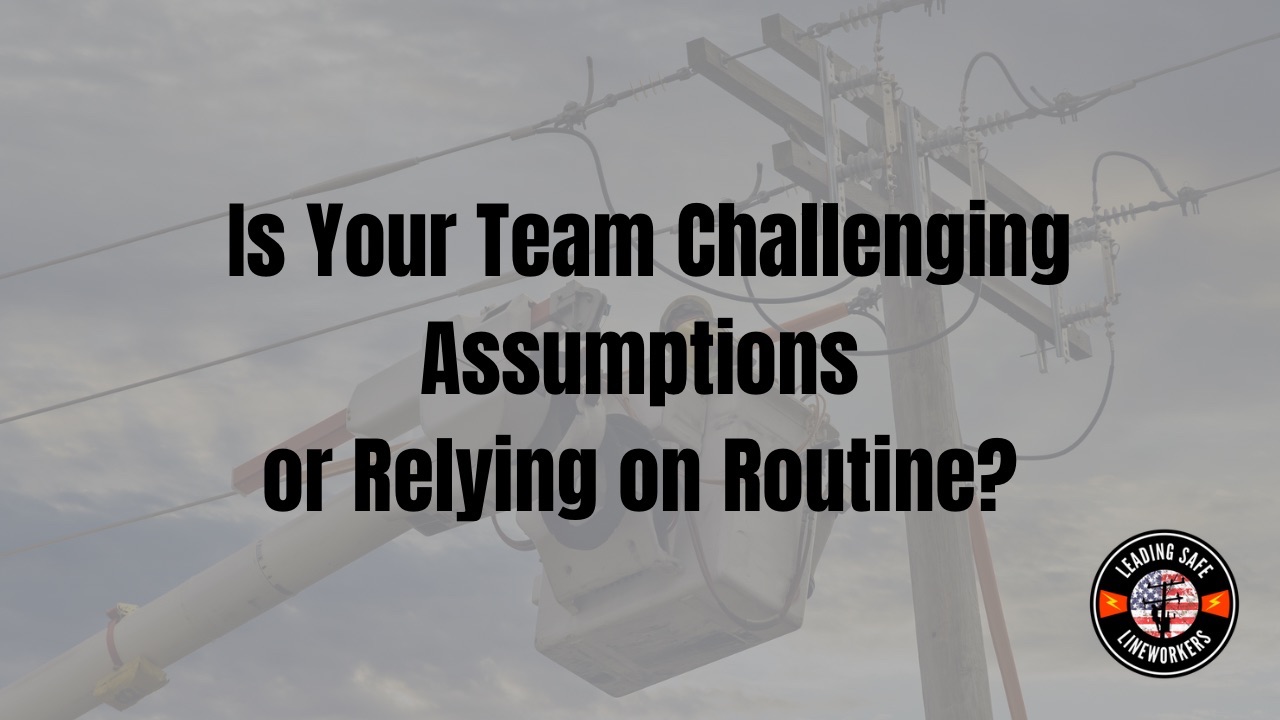
We’ve traveled a long road together through this series, and if you missed any part, you can catch up on the dangers of complacency and how to prevent it in Part 1 [here]. I hope by now one thing stands out loud and clear: the true key to preventing workplace incidents is our ability—and responsibility—to challenge assumptions.
Through this series, we’ve dissected complacency, explored why questioning what we think we know is crucial, and highlighted strategies that keep safety culture from becoming stale. But let’s be real, the bottom line is this: safety isn’t just about memorizing protocols or following rules; it’s about adopting a mindset, a commitment to protect ourselves and our teams every single day.
Challenging assumptions goes beyond avoiding mistakes. It’s about building a culture where safety is a living, breathing part of every task, no matter how routine. The moment we start coasting, thinking we’ve “got it down,” we open the door to risk. Every job, no matter how familiar, has the potential for something to go wrong. And the responsibility to stay sharp, aware, and prepared is ours. By pushing back against the status quo, encouraging open dialogue, and continually striving to improve how we work, we create an environment where every person is focused on one shared goal: making sure each of us gets home safe at the end of the day.
Personal Reflection: The Hardest Lesson From My Near-Fatal Experience
As I sit here, reflecting on my own journey, I can tell you—these lessons weren’t easy ones. My near-fatal incident back in 2015 shook me to my core. It was a wake-up call, and believe me, it was brutal. I assumed things were under control. I assumed the pre-job briefing had been properly done. I assumed the equipment was safe. That string of assumptions nearly cost me my life. The electricity that held me hostage that day? It was the direct result of not challenging what I thought I knew.
But out of that terrifying experience came a deeper understanding: vigilance isn’t a one-time thing. Safety doesn’t happen by accident—it’s something you have to work on daily. It’s about staying proactive, asking questions, and refusing to take anything for granted. That moment on the tower taught me that assumptions can kill, and since then, I’ve made it my mission to help others avoid the same mistakes I made.
My journey, from lineman to safety director, has been shaped by that single incident. It solidified for me that safety is more than just a task on a to-do list—it’s a responsibility. It’s about making sure that everyone we work with, ourselves included, gets to go home to their families, every single night. And that requires a relentless commitment to staying sharp, vigilant, and challenging every assumption that crosses our minds.
Your Call to Action: Take These Lessons and Make Them Yours
So here we are at the end of this series, and I’ve got one final ask: take these lessons and apply them to your own work environment. Don’t wait for a near-miss, or worse, an incident to jolt you into action. Start challenging assumptions right now. It doesn’t have to be complicated—question the way routine tasks are done, implement regular debriefs after jobs, and foster a culture where open communication is expected, not just encouraged. Take the time to pause, reflect, and make sure every detail has been accounted for.
Remember this: safety isn’t a box to check. It’s a continuous practice, a value we must live by, day in and day out. By making vigilance a non-negotiable part of your workplace culture, you’ll help prevent incidents before they happen and build a stronger, more resilient team in the process.
So, as you go forward, stay sharp. Stay vigilant. And above all, stay safe. Because the small act of questioning an assumption today could prevent a disaster tomorrow. Let’s continue working together to build a safety culture that’s not just effective but so deeply ingrained that it becomes second nature.
Thank you for walking this journey with me, and I hope these insights serve you well as you work toward creating safer, stronger environments for your teams.

